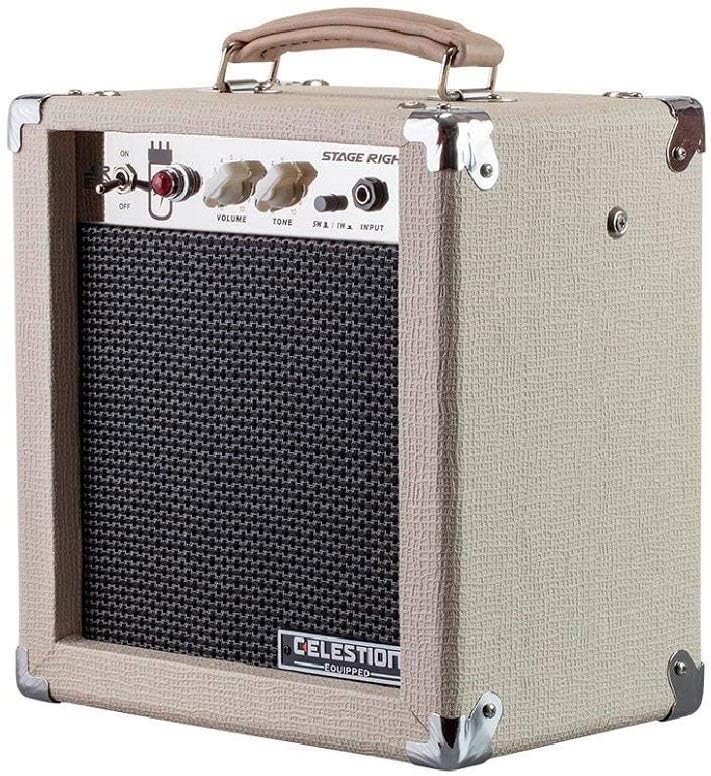Tube Amps vs. Solid-State Amps
Are you a music enthusiast constantly searching for the perfect sound? If so, you’ve likely come across the ongoing debate of tube amps versus solid-state amps. With a multitude of opinions and conflicting information out there, it can be overwhelming to navigate this topic and make an informed decision. That’s why we’re here to help. In this blog post, we will dive into the world of tube amps and solid-state amps and shed some light on their differences, advantages, and disadvantages. By the end, you’ll have a clearer understanding of which amplifier is best suited for your musical needs. Let’s embark on this sonic journey together!
Top-Rated Tube Amps for Exceptional Guitar Tone
What are Tube Amps?
Tube amps, also known as vacuum tube amplifiers or valve amplifiers, are a type of audio amplifier that use vacuum tubes to amplify electrical signals. These amplifiers have been around for decades and are favored by many audiophiles and musicians for their unique characteristics and warm, natural tone. In this blog post, we will delve into the world of tube amps, exploring how they work, their characteristics, and their pros and cons.
How do Tube Amps Work?
Tube amps use vacuum tubes to amplify audio signals. These vacuum tubes, or valves, are electronic components that rely on thermionic emission to function. When an audio signal is applied to the input of a tube amp, it passes through the preamp stage, where the signal is amplified by the vacuum tubes. The amplified signal then moves through the power amp stage, where it is further amplified to a level suitable for driving speakers.
Characteristics of Tube Amps
Tube amps are known for their distinct characteristics that set them apart from solid-state or digital amplifiers. Here are some key features and benefits of tube amps:
- Warm and Natural Tone: Tube amps are renowned for their warm, rich, and organic sound. They produce a smooth distortion when pushed to their limits, resulting in a pleasing harmonic complexity that many musicians and audiophiles find appealing.
- Dynamic Range: Tube amps excel at handling dynamic range, allowing for a wide range of volume levels without sacrificing clarity or detail. They can effortlessly transition from whisper-quiet passages to thunderous crescendos, capturing every nuance of the music.
- Musicality: Tube amps are often described as being more “musical” than solid-state alternatives. They have a way of bringing out the subtleties and nuances in music, providing a more engaging and immersive listening experience.
- Distortion Characteristics: Tube amps produce a type of distortion called “even-order harmonic distortion,” which is perceived by many as more pleasing to the ear compared to the “odd-order harmonic distortion” produced by solid-state amplifiers. This contributes to the warm and smooth sound associated with tube amps.
Pros and Cons of Tube Amps
While tube amps offer unique sonic qualities, they also come with certain drawbacks that are worth considering. Here’s a breakdown of the pros and cons:
Pros
- Warm and natural tone with pleasing harmonic distortion.
- Excellent handling of dynamic range.
- Engaging and immersive listening experience.
- Distinctive “musical” quality.
Cons
- Higher cost: Tube amps tend to be more expensive than solid-state amplifiers due to the cost of the vacuum tubes and the complexity of their design.
- Maintenance: Tube amps require regular maintenance, including tube replacements and bias adjustments, to ensure optimal performance.
- Fragility: Vacuum tubes are delicate and can be easily damaged, requiring careful handling and transportation.
What are Solid-State Amps?
Solid-state amps, also known as transistor amps, are a popular choice among musicians and audio enthusiasts due to their affordability, reliability, versatility, and clean sound reproduction. In this blog section, we will take a closer look at what solid-state amps are, how they are constructed, and the advantages they offer over other types of amplifiers.
Construction of Solid-State Amps
Solid-state amps are built using solid-state electronics, which means they rely on transistors, diodes, and other semiconductor devices to amplify the audio signal. Unlike tube amps that use vacuum tubes, solid-state amps use these solid-state components to accomplish the amplification process.
Most solid-state amps consist of the following key components:
- Preamp Section: This section shapes the audio signal before it goes to the power amp section. It typically includes tone controls, gain controls, and other features that allow users to customize their sound.
- Power Amp Section: The power amp section is responsible for amplifying the audio signal to a level that can drive speakers. Solid-state power amps use transistors to accomplish this task efficiently.
- Power Supply: Solid-state amps require a stable and reliable power supply to operate effectively. The power supply converts AC voltage from the wall outlet into DC voltage that the amp can use.
- Heat Sink: Since solid-state amps generate heat during operation, they are equipped with heat sinks to dissipate the heat and prevent overheating.
Advantages of Solid-State Amps
Solid-state amps offer several advantages that make them a popular choice for both professionals and beginners. Let’s take a closer look at these advantages:
1. Affordability
Compared to tube amps, solid-state amps are generally more affordable. This affordability makes them accessible to a wider range of musicians and audio enthusiasts, allowing them to enjoy high-quality amplification without breaking the bank.
2. Reliability
Solid-state amps are known for their reliability. Unlike tube amps that require regular maintenance and tube replacements, solid-state amps have a longer lifespan and require minimal upkeep. This reliability makes them an excellent choice for gigging musicians who need equipment that can withstand frequent use and transport.
3. Versatility
Solid-state amps are highly versatile, capable of producing a wide range of sounds to suit different musical styles and genres. They often come equipped with various built-in effects, such as reverb, delay, and distortion, allowing musicians to experiment and tailor their tone to their specific preferences.
4. Clean Sound Reproduction
One of the key strengths of solid-state amps is their ability to provide clean and consistent sound reproduction. They offer a transparent and accurate representation of the audio signal without introducing much coloration or distortion. This clarity makes solid-state amps particularly suitable for genres that require precise and detailed sound reproduction, such as jazz, classical, or studio recording.
Comparison of Tube Amps and Solid-State Amps
When it comes to amplifiers, two main options dominate the market: tube amps and solid-state amps. Both types have their own unique characteristics and offer different sound qualities, power capabilities, responsiveness, and distortion levels. Understanding these differences is crucial for musicians and audio enthusiasts looking to find the perfect amplifier for their needs. In this blog post, we will delve into the details of tube amps and solid-state amps, exploring how they affect the playing experience and tone.
Sound Quality
Tube Amps
- Known for their warm and rich sound.
- Natural compression and harmonics add depth and character to the audio.
- Smooth overdrive and distortion tones.
- Preferred by many guitarists for blues, rock, and vintage genres.
- Examples of popular tube amp brands: Fender Deluxe Reverb, Marshall JCM800.
Solid-State Amps
- Generally produce a cleaner and more precise sound.
- Accurate reproduction of the original audio signal.
- Suitable for genres that require a more transparent and precise tone, such as jazz and metal.
- Examples of popular solid-state amp brands: Roland JC-120 Jazz Chorus, Line 6 Spider V.
Power
Tube Amps
- Typically lower power ratings compared to solid-state amps.
- Distinctive power tube saturation at higher volumes.
- Preferred by musicians looking for natural tube breakup at lower volumes.
- Examples of popular low-power tube amps: Fender Blues Junior, Vox AC15.
Solid-State Amps
- Higher power ratings available, offering more headroom and volume.
- Able to handle higher wattages without distortion or compression.
- Well-suited for gigs and larger venues.
- Examples of popular high-power solid-state amps: Peavey Bandit 112, Boss Katana 100.
Responsiveness
Tube Amps
- Highly responsive to playing dynamics and touch.
- Sensitive to changes in picking intensity and guitar volume.
- Expressive and dynamic tone, allowing for more nuanced playing.
- Examples of tube amps known for their responsiveness: Mesa Boogie Mark V, Orange Rockerverb.
Solid-State Amps
- Less sensitive to playing dynamics.
- Generally offer a more consistent tone regardless of playing style.
- Well-suited for players who prefer a more predictable and constant sound.
- Examples of solid-state amps known for their consistency: Yamaha THR10, Blackstar ID:Core.
Distortion
Tube Amps
- Natural and organic-sounding distortion.
- Smooth clipping and harmonics.
- Often used for lead guitar tones and classic rock sounds.
- Examples of tube amps renowned for their distortion: Mesa Boogie Dual Rectifier, Marshall Plexi.
Solid-State Amps
- Distortion often achieved through modeling or digital processing.
- Capable of producing a wide range of distortion tones.
- Ideal for players who require versatility and the ability to switch between different distortion styles.
- Examples of solid-state amps with versatile distortion capabilities: Boss Katana 50, Line 6 Helix.
Choosing the Right Amp for You
When it comes to amplifiers, there is a wide range of options available in the market today. Whether you are a beginner or an experienced guitarist, finding the right amp that suits your needs can significantly enhance your playing experience. In this blog post, we will explore the factors to consider when choosing an amp, such as genre/style of music, playing environment, budget, and personal preferences. We will also delve into the differences between tube amps and solid-state amps, and how these factors should influence your decision.
Factors to Consider
Genre/Style of Music
Different genres and styles of music demand different tones and characteristics from an amplifier. For example, if you are into heavy metal, you may want an amp that provides aggressive distortion and high-gain tones. On the other hand, if you are into jazz or blues, you may prefer an amp that offers warm, clean tones with a touch of natural tube compression. It is important to consider the specific sonic qualities required by your style of music when choosing an amp.
Playing Environment
The playing environment also plays a crucial role in determining the right amp for you. If you primarily play at home or in a small studio, a lower wattage amp may be more suitable to avoid overpowering the space and disturbing others. However, if you frequently play in larger venues or with a band, a higher wattage amp with enough headroom to cut through the mix may be necessary. Assessing the size and nature of the venues you perform in will help guide your decision.
Budget
Budget is always an important consideration when making any purchase, and amplifiers are no exception. There is a wide price range for amps, and while it’s tempting to go for the most expensive option, it is not always necessary. Determine your budget and look for amps that offer the best value within that range. Remember, higher price doesn’t always guarantee better sound or performance. Researching and reading reviews about different amp models can help you find options that deliver excellent quality within your budget.
Personal Preferences
Lastly, your personal preferences should not be overlooked when choosing an amp. Consider factors such as the amp’s weight, size, and portability, as well as any specific features or effects you may desire. Some guitarists prefer the simplicity and organic tone of a tube amp, while others appreciate the reliability and versatility of solid-state amps. Understanding your own preferences and priorities will help you make a more informed decision.
Tube Amps vs. Solid-State Amps
Now that we have explored the factors to consider, let’s delve into the differences between tube amps and solid-state amps. Both types have their own unique characteristics and advantages, and understanding these distinctions will further assist you in making the right choice.
Tube Amps
- Warm and Organic Tone: Tube amps are known for their warm, rich, and dynamic tone. They often exhibit a natural compression and responsiveness that many guitarists find pleasing.
- Natural Overdrive: Tube amps excel at producing natural, smooth overdrive when pushed to their limits, making them ideal for genres like blues and rock.
- Higher Maintenance: Tube amps require more maintenance, as the tubes need to be replaced periodically. This can add to the overall cost of ownership.
Solid-State Amps
- Reliability: Solid-state amps are generally more reliable and less prone to component failures compared to tube amps.
- Affordability: Solid-state amps tend to be more affordable than tube amps, making them a popular choice for beginners or those on a tighter budget.
- Versatility: Solid-state amps often come with built-in effects and modeling capabilities, allowing for a wide range of tones without the need for additional pedals or equipment.
Ultimately, the decision between tube amps and solid-state amps boils down to your personal preferences, playing style, and budget. It is advisable to try out different amps, either by visiting a local music store or attending guitar expos, to get a feel for their sound and features before making a purchase.
In conclusion, choosing the right amp involves considering factors such as genre/style of music, playing environment, budget, and personal preferences. These factors will guide you in deciding between tube amps and solid-state amps. Remember to research and try out different models to find the amp that suits your individual needs and enhances your playing experience. Happy hunting!
Final Thoughts: Making an Informed Decision
In conclusion, this blog post has shed light on the key differences between tube amps and solid-state amps. Tube amps are praised for their warm and rich sound, as well as their ability to deliver natural harmonics and dynamic response. However, they require more maintenance, are bulkier, and tend to be more expensive. On the other hand, solid-state amps offer reliability, durability, and affordability, but may lack the same level of tonal depth and nuance as tube amps.
Ultimately, the choice between tube amps and solid-state amps depends on your specific needs and preferences. If you value vintage tone, musicality, and are willing to invest in maintenance and greater upfront costs, a tube amp would be a suitable choice. On the contrary, if you prioritize versatility, affordability, and ease of use, a solid-state amp may be the better option.
It’s worth considering the context in which you’ll be using the amp. For studio recordings or small, intimate performances where tonal nuances matter, a tube amp could be the ideal choice. On the other hand, for gigs, rehearsals, or situations where reliability and portability are essential, a solid-state amp would likely be more practical.
Ultimately, the decision boils down to personal preference, playing style, and the specific requirements of your musical endeavors. By carefully considering the pros and cons outlined in this post, you can make an informed choice that best suits your needs and allows you to achieve the desired sound for your music.














![Best Yamaha DJ Speaker Picks [TOP 7]](https://forthecountryrecord.com/wp-content/uploads/2024/02/yamahastagepas600btportablepasystem.jpg)


I appreciate the author’s balanced approach in discussing the pros and cons of tube amps and solid-state amps. It’s important to consider both sides before making a decision.
It’s interesting to see the technical comparisons between tube amps and solid-state amps. I never realized how different their circuit designs are.
Great article! I’ve always been curious about the differences between tube amps and solid-state amps.
I’ve had the pleasure of using both tube amps and solid-state amps, and I definitely prefer the warm, rich sound of tube amps.
I’m still undecided on which type of amp to choose. This article has provided some valuable insights that will help me make an informed decision. Thanks!